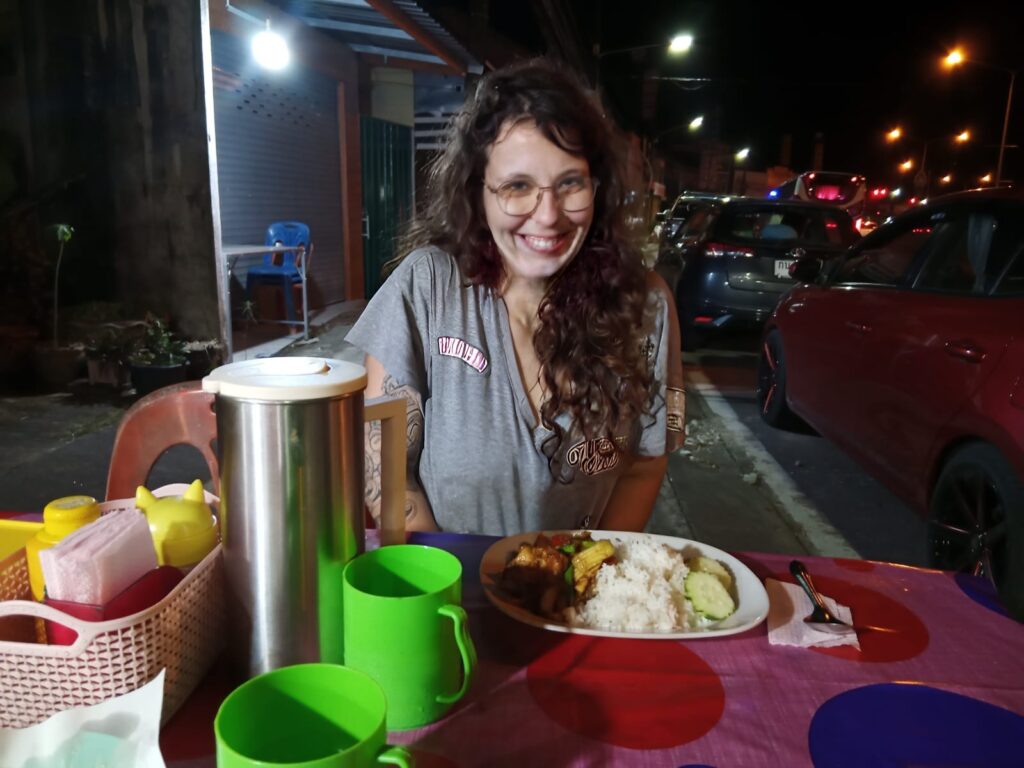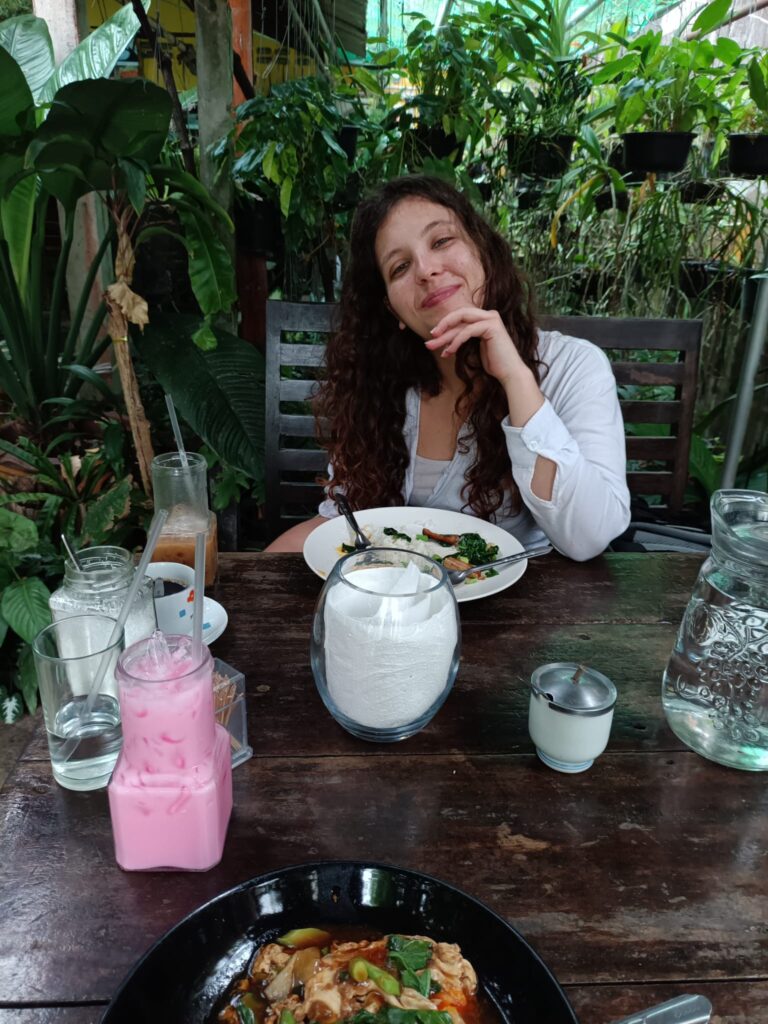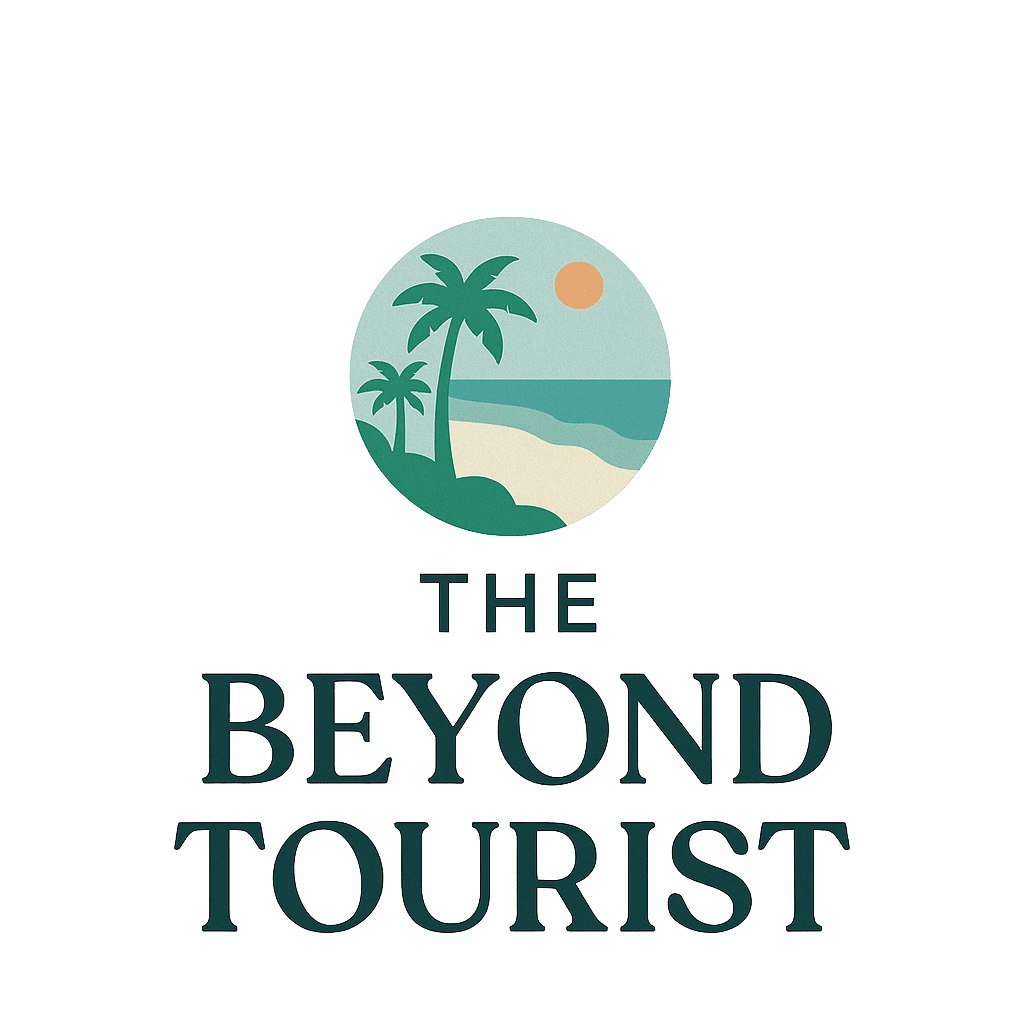See in my Video how you can use Google Maps and Google Lens to avoid stomachache 😋
Before heading to Thailand, I was a bit nervous. I’m vegetarian and lactose-intolerant, and people around me kept saying:
“Oh, you’ll be fine! Asia barely uses dairy, and Thailand has loads of vegetarian food.”
Well… it wasn’t that simple.
I quickly learned that Google Lens, Google Translate, and Google Maps were going to be my best friends on this trip. Without them, my stomach would have been in serious trouble.
Bangkok – The First Test

We started in Bangkok, and my first thought was: Oh no… I’m never going to find anything to eat xD. Everywhere I looked, there were meat dishes.
I asked locals if certain foods contained meat, but since we weren’t in the main tourist area, English wasn’t widely spoken. Answers weren’t always clear.
That’s when I pulled out my phone. With Google Lens, I scanned every sign and menu I could find, searching for allergens. To my surprise, I discovered that many Thai dishes actually contain milk products. Without Lens, I wouldn’t have known.
[Insert Photo Here: Screenshot or picture of using Google Lens on a Thai menu]
But sometimes, menus only listed dish names, which didn’t help much. So I switched to Google Translate, typed “I don’t eat milk or meat” in Thai, and showed it to restaurant staff.
In about 80% of cases, this worked beautifully—they’d point to safe dishes for me. In the other 20% though, I still ended up with chicken or fish. Apparently, in many places, those don’t count as “meat.”
And then came the tricky part: dialects. What worked in Bangkok didn’t always work elsewhere. In one town, my carefully translated sentence got nods and smiles; in the next, it was met with blank stares. That’s when I realized I had to improvise—talk to locals, mimic, ask around, and sometimes even scribble down new versions of the same sentence. Whenever we met someone with a bit of English, we asked them to teach us the local way of saying it, and wrote it into a little notebook. As we traveled, our phrasebook grew and adapted.
The Provinces – Rice, Veggies, and Tofu (Sometimes with a Surprise)

Once we left Bangkok and headed into the provinces, food became simpler—but also easier in some ways. Almost everywhere, I could get rice and vegetables, which was a lifesaver. Thailand also has an incredible amount of tofu, which made me so happy… except that often, the tofu was stir-fried together with chicken or fish. So, I had to double-check every time.
This is where the magic word “Jay” helped. A vegan couple we met taught us about it—written like a number 17, it signals vegan or vegetarian food. It didn’t always work perfectly (sometimes “Jay” meant just vegetarian, sometimes fully vegan), but it definitely gave me more options.
The couple also shared something else with us: stories that sounded so different from ours. Since my boyfriend and I usually avoid touristy restaurants and prefer to eat where the locals go, we had to fight a bit harder for safe meals. Meanwhile, in tourist areas, they said finding vegan food was super easy.
So that’s the balance: the more local you go, the more authentic it feels—but the harder it gets to stick to restrictions.
Koh Yao Noi – A Hidden Gem
Of all the places we visited, the absolute best for food was Koh Yao Noi.
[Insert Photo Here: Picture of Koh Yao Noi scenery or food]
There, we found Chaba Café and Gallery—an eco-friendly, wooden café run by the loveliest owners. It’s vegan-friendly, creative, and such a peaceful spot. They offer plenty of vegetarian and vegan dishes, and the atmosphere itself makes you want to stay forever.
But the real highlight? Extra Time Sports Bar & Restaurant.
[Insert Photo Here: Picture of Extra Time Sports Bar or the food served]
This place is completely unique. There’s no menu—you just ask the kind woman who runs it for vegan options, and she creates something magical from scratch. Every dish she made was an authentic Thai recipe, turned fully vegan without losing the flavor or soul. Honestly, it was the best food I had in Thailand. Ever.
She was so passionate about cooking because her husband is vegetarian. You could taste that love and care in every bite. It was the kind of place you never forget.
My System: The Travel App Combo
If you’re traveling with food restrictions, here’s the combo that saved me:
- Google Maps – great in cities to find vegetarian or vegan restaurants.
- Google Lens – a lifesaver for scanning menus and food labels.
- Google Translate – type or save phrases like “no meat, no milk,” and don’t be afraid to ask locals to correct your pronunciation for different regions.
No fancy apps needed—these free tools already on your phone are enough.
What This Trip Taught Me
- Rice and veggies are always safe options.
- Tofu is everywhere (just watch out for the surprise chicken or fish).
- The word “Jay” opens doors, but local help is even better.
- And sometimes, the best food finds you through people you meet along the way.
The Invitation
If you’re vegetarian, vegan, lactose-intolerant, or gluten-free—don’t let that stop you from traveling Thailand (or anywhere). Yes, it takes patience. Yes, you’ll have some slip-ups. But with the right tools, a bit of creativity, and a willingness to talk to locals, you can still have authentic food experiences.
And who knows—you might just stumble across a hidden gem like Koh Yao Noi, where a passionate cook turns your restrictions into some of the best meals of your life.
